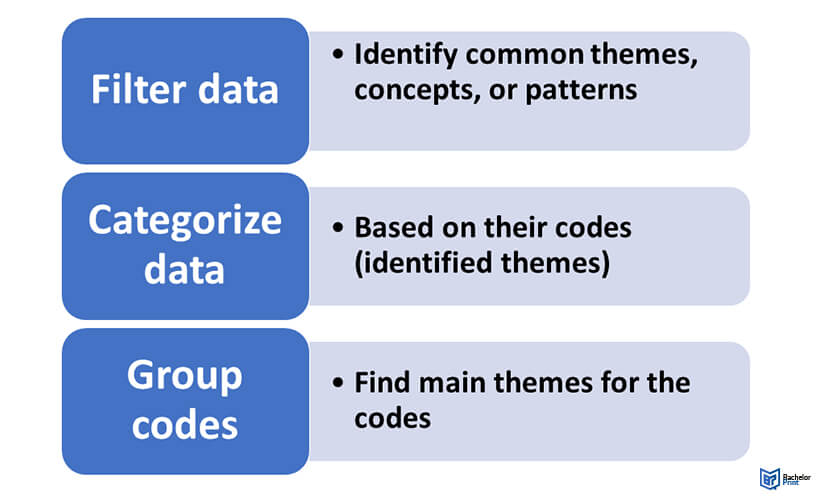
In contrast to survey questionnaires, qualitative interviewing seeks to go further below superficial responses to uncover the underlying meanings individuals ascribe to events and the complexity of their attitudes, behaviors, and experiences.
Semi-structured interviews stand as a key methodology in both qualitative and mixed-methods research, offering a balance between structure and flexibility.
Definition: Semi-structured interview
A semi-structured interview is a data collection method that focuses on asking questions within a preplanned topic framework. However, neither the order nor the phrasing of the questions is specified.
In semi-structured interviews, structured and unstructured interviews are combined:
- Structured interviews: The topics and sequence of the questions are decided beforehand.
- Unstructured interviews: Have no predefined questions.
When to use a semi-structured interview
When to use semi-structured interviews most effectively:
- You have conducted interviews in the past. You can easily ask the wrong question or make someone feel uncomfortable while making impromptu inquiries.
- The nature of your study question is exploratory. The participants’ responses can drive future research questions and aid in developing a more substantial knowledge basis for future studies.
Different interview types
Choose the sort of interview that best fits your research needs. This table illustrates the most significant distinctions between the four categories.
| Structured interview | Semi-structured interview | Unstructured Interview | Focus Group | |
| Fixed questions | ✔ | ✔ | ✔ | ✔ |
| Fixed order of questions | ✔ | ✘ | ✘ | ✘ |
| Fixed number of questions | ✔ | ✘ | ✘ | ✘ |
| Option to ask additional questions | ✘ | ✔ | ✔ | ✔ |
Pros and cons of a semi-structured interview
Advantages
Semi-structured interviews have several benefits.
- Best of both: Frequently, semi-structured interviews are viewed as “the best of both worlds.” Combining elements of organized and unstructured interviews give them comparable, reliable data and the capacity to ask follow-up questions.
- Zero distractions: Establishing a conceptual framework in advance helps the interviewer and the interviewee focus, preventing distractions and fostering two-way dialogue.
- Detail and richness: Although the process of semi-structured interviews is comparable to that of structured interviews, surveys, and questionnaires, its more open-ended nature allows for more depth and detail. If necessary, participants might be asked to clarify, expand, or rephrase their responses.
Disadvantages
However, semi-structured interviews have disadvantages as well.
- Poor validity: The adaptability of semi-structured interviews might also compromise their validity. Comparing responses amongst participants can be difficult depending on how far the interviewer deviated from the specified questions.
- Risk of bias: The open-ended nature of semi-structured interviews might lead to the urge to ask leading questions, which can influence your answers. Inversely, your respondents may also attempt to provide you with the responses they believe you want to hear, resulting in social desirability bias.
- Challenging to develop good semi-structured interview questions: It might be tough to conduct semi-structured interviews effectively due to the delicate balance between prior planning and impromptu asides. Everyone’s willingness to share differs. It might be challenging to be both supportive and impartial.
Semi-structured interview: The questions
Due to their frequently open-ended nature, it cannot be easy to construct semi-structured interview questions that elicit the desired information without biasing the responses. Listed below are some pointers:
- Before the interview, specify the regions or subjects you will focus on. This will assist you in building a framework of information-specific queries.
- Make a list of questions you want to ask yourself before the interview so you don’t get distracted. In the beginning, stick to simple questions and work your way up to more complex ones once you’ve established a rapport with the person.
- Avoid jargon and complex language and strive for clarity and concision.
Conducting a semi-structured interview
You can proceed to the subsequent phases if you’ve decided that a semi-structured interview suits your research topic.
Step 1 – Goals and objectives
As you begin to formulate your research question, you can use leading questions like:
- What do you hope to discover or accomplish through this interview?
- Why did you choose this interview over another type of interview or a different research method?
- What subjects or questions do you foresee having follow-up questions?
Step 2 – Designing the interview questions
Try to be straightforward and concise, and formulate your queries with clarity. Choose your words carefully if your issue is delicate or could provoke an emotional response.
Knowing when and how to ask follow-up or impromptu questions is among the most challenging aspects of conducting this interview. In light of this, it is essential to have a reference manual. In addition, it may be helpful to hypothesize what further questions may develop from your participants’ responses.
Step 3 – Finding participants
There are several sampling techniques you can employ to select interview participants, including:
- Voluntary response sampling: Example: mailing an email to a university mailing list and selecting participants based on the responses received.
- Your research could benefit from a stratified sampling of a particular character trait relevant to you.
- Convenience sampling of individuals nearby, such as other university students.
Step 4 – Choosing a medium
It is essential to plan how you will conduct the interview beforehand. It would help to determine whether it will be live or conducted using pen and paper. Additionally, you must choose between phone, in-person, and videoconferencing if the meeting is done in real-time.
Keep in mind that each of these approaches has some benefits and drawbacks:
- Pen-and-paper surveys may be easier to arrange and evaluate, but respondents will be more likely to have prepared responses, which may reduce your data credibility.
- In-person interviews can result in anxiousness or interviewer effects, in which the respondent feels compelled to answer in a way that they believe will satisfy them or encourage them to like them.
- Videoconferencing might feel awkward or unnatural, which may impact your performance.
Step 5 – Conducting the interview
Maintain as much environmental consistency as possible throughout interviewing to eliminate prejudice. Consider your body language and your tone of speech.
Similarly, among the most challenging aspects of semi-structured interviews is maintaining the objectivity of your questions. This can be especially difficult if you ask your participants impromptu questions or follow-ups that are not scripted.
Analyzing your semi-structured interview
After completing your interviews, you must assess your findings. For organizational purposes, assign each participant a number or a pseudonym.
Transcribing interviews
Choose between verbatim transcription and intelligent verbatim transcription before beginning the transcribing process.
- If pauses, laughs, or filler words such as “umm” or “like” impact your study and conclusions, you should conduct verbatim transcription and incorporate them.
- You can do intelligent verbatim transcription, which eliminates fillers, corrects grammatical errors, and is typically simpler to evaluate.
Thematic or content analysis?
The subsequent step is to undertake a theme or content analysis. Typically, this entails “coding” words, patterns, or repeated answers and splitting them into labels or groups for a more comprehensive analysis.
Because semi-structured interviews are more open-ended, a thematic analysis is more likely than content analysis.
- Scrutinize your data to uncover common themes, concepts, or patterns. Preliminary conclusions regarding your participants’ perspectives, knowledge, and experiences can be drawn in this way.
- After reviewing your responses, you can collect the data into categories based on their “code.” These codes provide a concise summary of the key data points and trends that have been identified.
- Next, these codes must be organized into themes. Generally, themes are more significant than codes, and several codes are frequently grouped under a single theme. After establishing your themes, ensure they accurately represent the replies’ patterns.

Results of your semi-structured interview
After you’ve analyzed your data, you’ll need to write up your results in a research paper.
- Methodology: Your methodology section shows how you obtained the data in this instance, outlining your semi-structured interview procedure, and justifies or conceptualizes your analysis.
- Discussion and results: Typically, your classified categories are addressed in the discussion and result sections.
- Conclusions: You might then end by highlighting the essential findings and potential possibilities for future research.
FAQs
- You have conducted interviews in the past.
- The nature of your study question is exploratory.
The interviewer effect is a bias when an interviewer’s characteristics influence the interviewee’s responses.
- Inductive reasoning is a bottom-up methodology, whereas deductive reasoning is a top-down method.
- Inductive reasoning proceeds from the particular to the general, whereas deductive reasoning, concludes by moving from the general to the particular.
